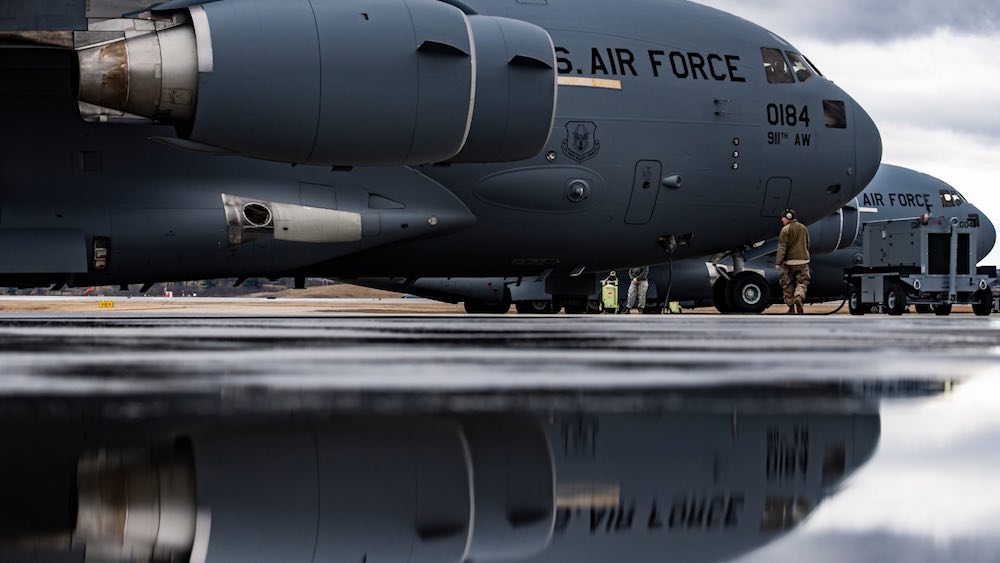|
Listen to this article  |

RE2 Robotics, a 2021 RBR50 Robotics Innovation Award winner, is developing an autonomous aircraft inspection and sustainment system for the U.S. Air Force. The system will focus on tasks that are part of the pre- and post-flight inspection of C-17 aircraft. The system will reduce the need for military personnel to work at height when conducting routine aircraft inspection and maintenance tasks.
The program, Mobile Autonomous Aircraft Platform for Sustainment (MAAPS), will focus on the development of dual RE2 Sapien robotic arms integrated with a JLG scissor lift to perform tasks on C-17 military aircraft at height. These tasks include at-height visual inspection of the aircraft’s fuselage, wing, and tail; the at-height reading of analog gauges; and other autonomous sustainment activities.
“Whether in the military or in commercial markets, working at height is inherently risky for aircraft maintenance and repair personnel,” said Jorgen Pedersen, president and CEO of RE2 Robotics. “By automating certain flightline maintenance tasks during aircraft turnarounds, MAAPS will help the U.S. Air Force improve safety, overcome a shortage of trained maintenance personnel, and enhance the efficiency of aircraft readiness.”
The MAAPS system will leverage a pair of the RE2 Sapien 6M robotic arms, which feature embedded intelligence, integrated arm control, and a hardware design that can withstand extreme temperatures and environmental conditions. MAAPS will be designed as a multi-function system with various end-of-arm tools.
RE2 received $1.5 million in Phase II Small Business Innovation Research (SBIR) funding for this project.
“MAAPS will use RE2’s advanced computer vision and autonomy software, RE2 Detect and RE2 Intellect, to autonomously identify and travel to an aircraft to perform flightline sustainment tasks,” said Dr. Adam Brant, project manager, RE2 Robotics. “The goal is for this system to be a mobile, mission-adaptable platform that can perform ground-based line maintenance tasks in a variety of environmental conditions, including harsh weather that may be hazardous for Air Force personnel.”
Earlier in September, RE2 received a $9.5 million contract from the U.S. Navy to create an underwater robotic system for the autonomous neutralization of underwater mines. The system will use the RE2 Sapien Sea Class system to precisely place and attach neutralization devices to underwater mines and water-borne improvised explosive devices (WBIEDs). It also recently received $1 million from the U.S. Army to create an autonomous refueling system for AH-64 Apache helicopters.
Pedersen recently joined The Robot Report Podcast to discuss the evolution of the company, which was founded in 2001. RE2 was focused nearly 100% on defense work in 2016, but now the defense sector accounts for less than one-third of its business. You can listen to that podcast below.
RE2 Robotics won an RBR50 Award for the development of a robotic solution for autonomous deployment of solar fields. The Outdoor Autonomous Manipulation of Photovoltaic Panels (O-AMPP) robotic system is capable of both autonomously delivering and installing photovoltaic (PV) modules.
The O-AMPP base unit consists of the RE2 Sapien robotic manipulator fixed to the top of a large unmanned ground vehicle (UGV). This platform is capable of maneuvering in the tight spaces between PV arrays to deliver a new set of PV panels to the installation site. Using computer vision, the system registers the target installation location and uses the Sapien arm to lift a PV panel and install it into the array.
Credit: Source link


Comments are closed.